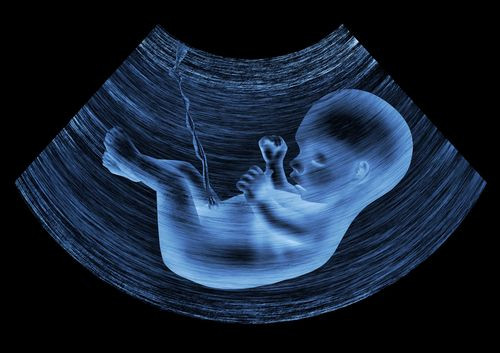Prenatal Exposure To High Levels Of Steroid Hormones May Explain Autism

One evolving theory of homosexuality accounts for the fact that no "gay gene" has ever been identified and suggests instead that an embryo’s exposure and response to sex hormones while in the womb may account for the development of a same-sex orientation. Now, a team of English and Danish scientists are proposing a similar theory for children with autism. In a recent analysis of amniotic fluid, they discovered that children who later develop autism are exposed to elevated levels of steroid hormones (including testosterone and cortisol) while in the womb.
"We previously knew that elevated prenatal testosterone is associated with slower social and language development, better attention to detail, and more autistic traits,” said Dr. Simon Baron-Cohen, a professor at University of Cambridge and lead author of the new study. “Now, for the first time, we have also shown that these steroid hormones are elevated in children clinically diagnosed with autism.”
Steroid Hormones
During pregnancy, a baby floats within amniotic fluid contained within a sac inside the womb. This fluid protects and helps the baby in any number of ways, and when women choose to have an amniocentesis, a type of genetic test for their baby, it is generally performed around 15 to 16 weeks of pregnancy. This timing coincides with a critical period for early brain development and sexual differentiation. For this reason, the research team involved in the current autism study understood that analysis of amniotic fluid samples would provide a unique window into fetal development.
For their analysis, then, the research team made use of a Danish biobank, which stores approximately 19,500 amniotic fluid samples from individuals born between 1993 and 1999. After identifying the amniotic fluid samples linked to 128 boys who had been diagnosed with an autism spectrum disorder, they next looked for four key "sex steroid" hormones in their fluid: progesterone, 17 hydroxyprogesterone, androstenedione, and testosterone. Part of what makes these hormones special is that each is synthesized from the preceding one, in a particular pathway. The researchers also tested for the steroid hormone cortisol that lies outside this pathway.
What did they discover?
On average, the autism group had higher levels of all steroid hormones, compared to a typically developing male comparison group.
"Because some of these hormones are produced in much higher quantities in males than in females, this may help us explain why autism is more common in males," Baron-Cohen stated in a press release. “These new results are particularly striking because they are found across all the subgroups on the autism spectrum, for the first time uniting those with Asperger Syndrome, classic autism, or Pervasive Developmental Disorder Not-Otherwise-Specified.” The research team is hoping to test whether the same finding may be discovered in females.
Although confident in their findings, Baron-Cohen, Dr. Michael Lombardo, also a professor in Cambridge, and Dr. Bent Nørgaard-Pedersen, a professor at Statens Serum Institute in Copenhagen, warn that their results should not be taken as a promising prenatal screening test. Similarly, researchers attempting to understand a potential relationship between prenatal development and homosexuality advise the same caution. In these studies, there may be considerable overlap between groups and scientists have not yet accounted for all the factors that may influence individual prenatal development.
Source: Baron-Cohen S, Auyeung B, Nørgaard-Pedersen B, et al. Elevated fetal steroidogenic activity in autism. Molecular Psychiatry. 2014.
Published by Medicaldaily.com



























